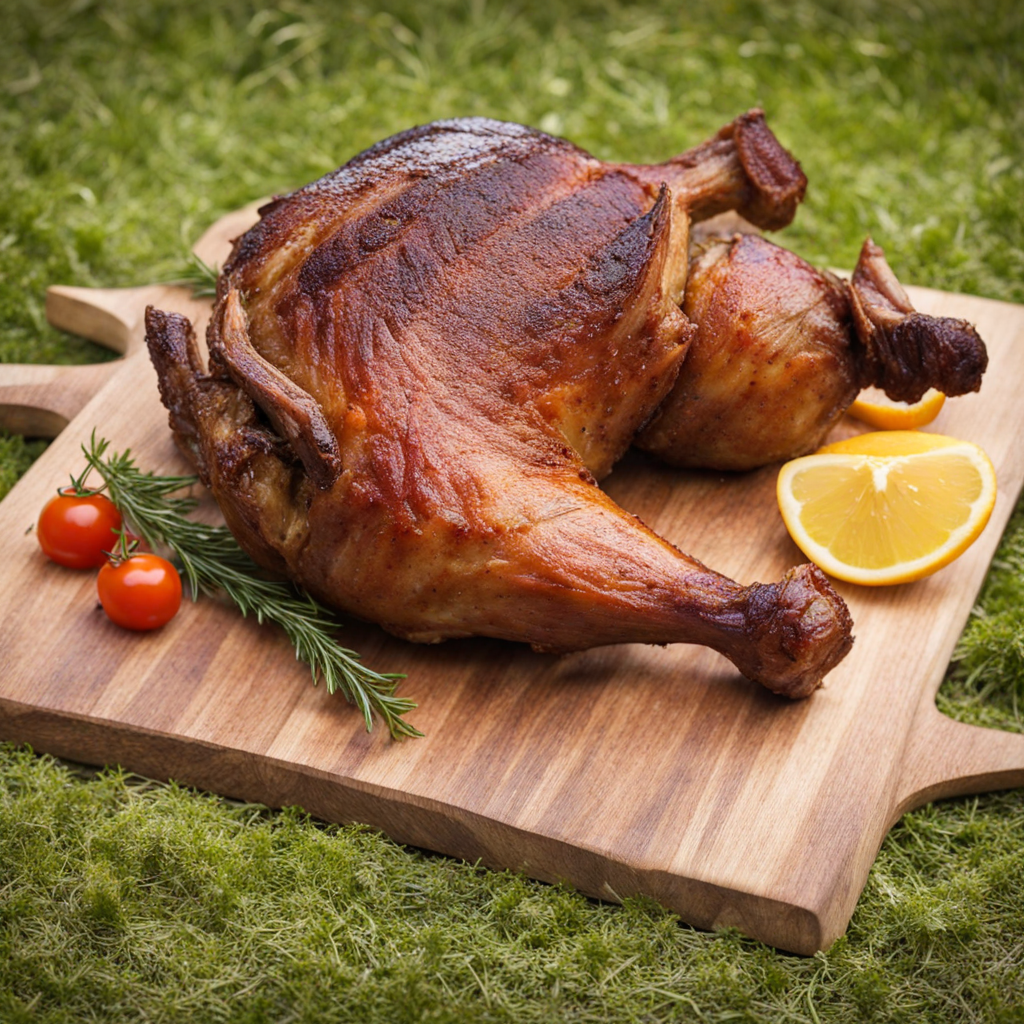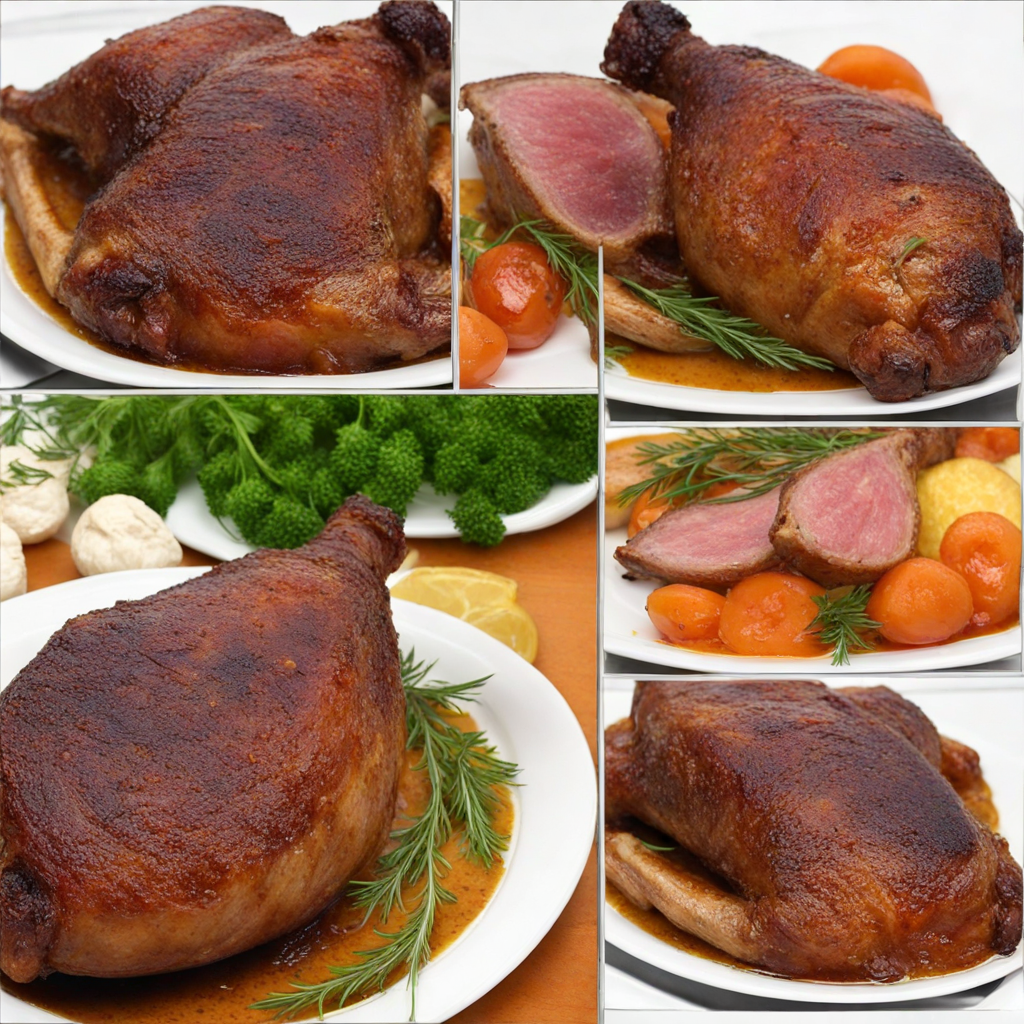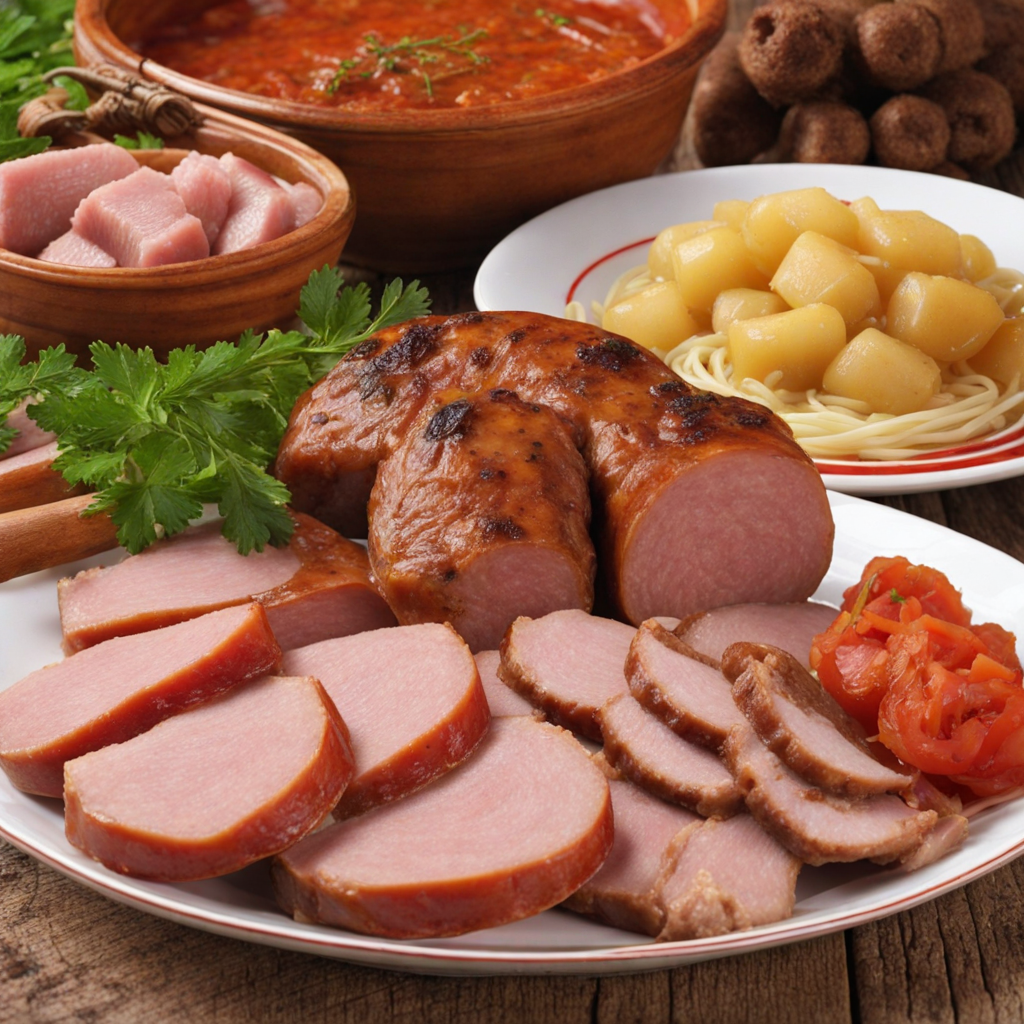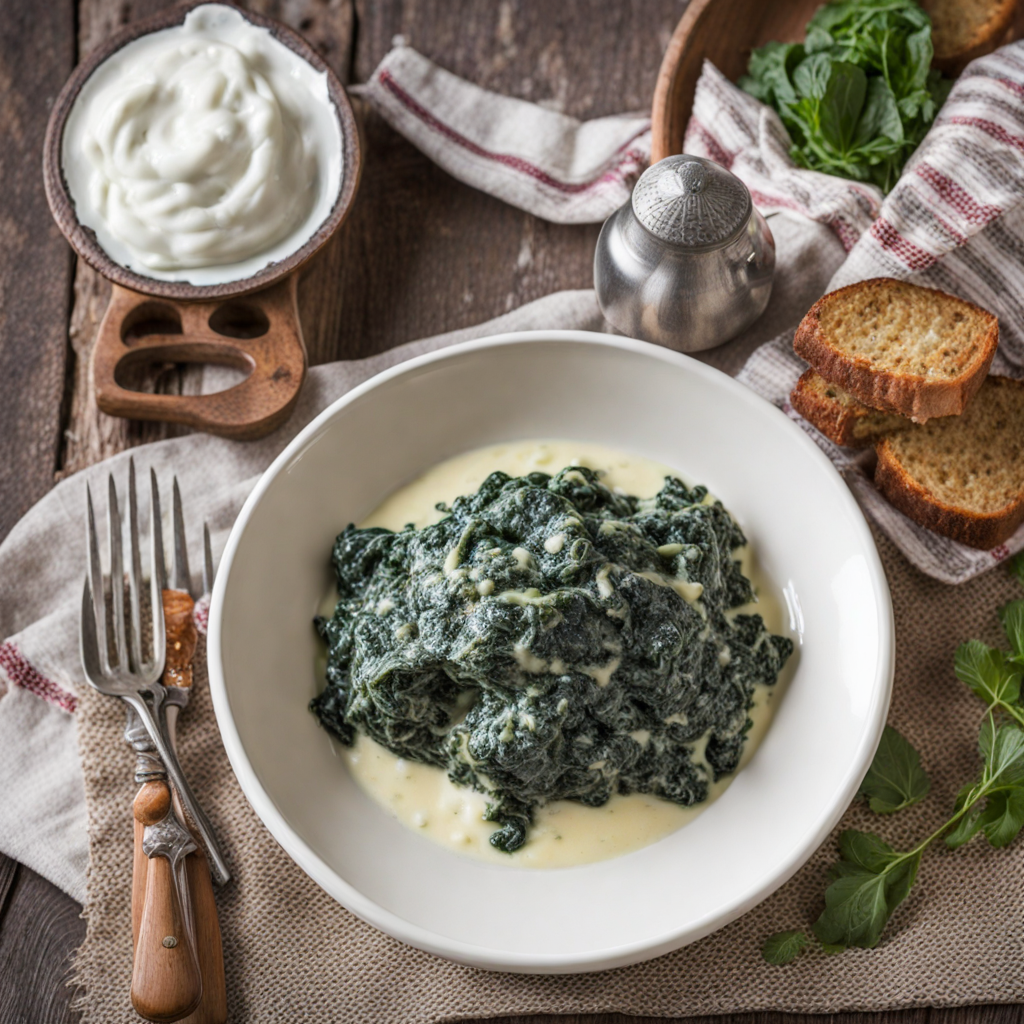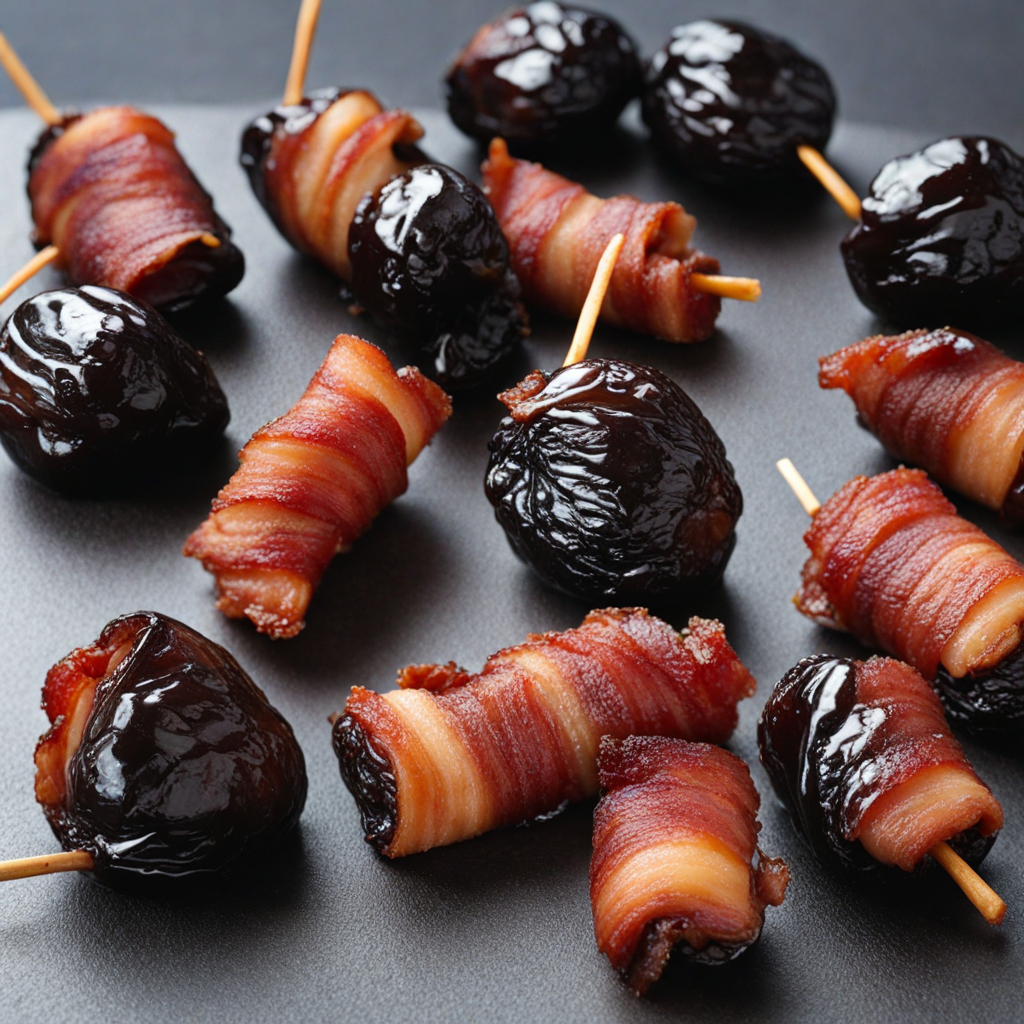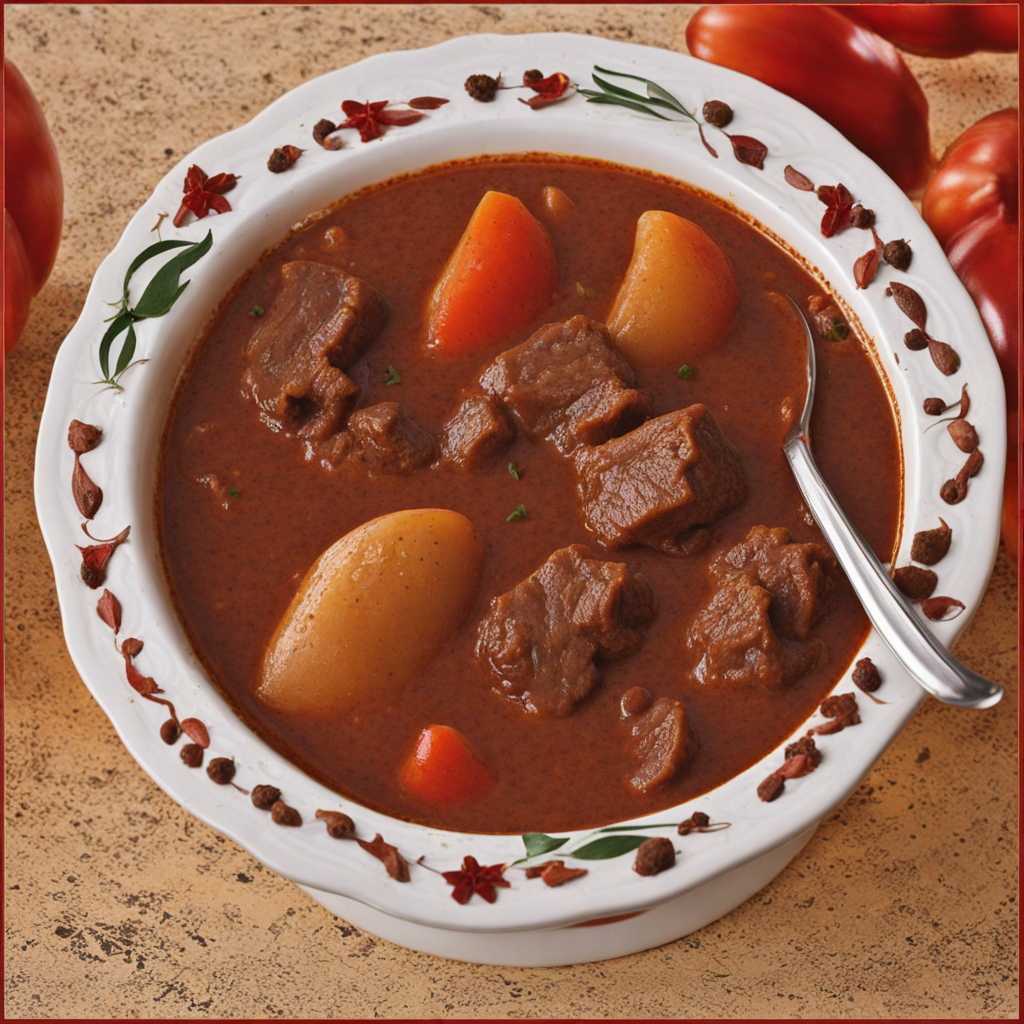Sült Libacomb
Sült Libacomb, or roasted duck leg, is a beloved dish in Hungarian cuisine known for its rich flavors and crispy skin. The duck is typically seasoned with a blend of herbs and spices, often including garlic, thyme, and paprika, which infuse the meat with a savory depth. The slow roasting process allows the fat to render out, making the skin perfectly crispy while ensuring the meat remains tender and juicy. Served alongside traditional sides like braised red cabbage or creamy dumplings, each bite offers a delightful contrast of textures and tastes, highlighting the heartiness of Hungarian cooking. The preparation of Sült Libacomb showcases the importance of time-honored techniques in Hungarian kitchens. The duck is often marinated ahead of time, allowing the flavors to meld and penetrate the meat. Once roasted, the dish emits a mouthwatering aroma that is hard to resist, making it a favorite in family gatherings and festive occasions. The golden-brown skin glistens appealingly, inviting diners to experience the deliciousness that lies within. This dish not only satisfies the palate but also provides a glimpse into Hungary's culinary traditions. Sült Libacomb is often accompanied by a rich gravy made from the pan drippings, adding an extra layer of flavor that brings the dish together. Whether enjoyed in a rustic tavern or at home, this comforting meal captures the essence of Hungarian hospitality, where food is crafted with care and shared with loved ones.
How It Became This Dish
Sült Libacomb: A Journey through Hungarian Culinary Heritage #### Origins Sült libacomb, or roasted goose leg, is a cherished dish in Hungarian cuisine, deeply rooted in the nation’s agricultural practices and culinary traditions. The origins of this dish can be traced back to the pastoral lifestyle of the Hungarian people, particularly the communities that thrived around the Great Hungarian Plain. This vast expanse of fertile land was ideal for raising livestock, including geese, which have been a staple in Hungarian farming since at least the Middle Ages. Geese were valued not only for their meat but also for their feathers, which were used in bedding and clothing. The practice of raising geese became a part of agricultural routines, especially in regions like Szeged and Kecskemét, where the climate and landscape were particularly conducive to their husbandry. The tradition of cooking goose legs is believed to have emerged as a practical method of preserving and utilizing the birds, which were often roasted during celebratory feasts, particularly during autumn harvests and Christmas. #### Cultural Significance In Hungary, food is a central element of cultural identity. Sült libacomb is more than just a dish; it reflects the values of community, celebration, and the cycles of nature. Historically, the preparation of roasted goose was a communal affair, often involving family gatherings and festive occasions. It symbolizes abundance and prosperity, making it a popular choice for holidays and special events. The preparation of Sült libacomb is steeped in tradition. The process involves marinating the goose legs in a blend of spices, often including paprika, garlic, and pepper, before slow-roasting them to achieve a crispy skin and tender meat. This method showcases the Hungarian culinary ethos of balancing flavors and textures, which is a hallmark of the nation’s cuisine. Moreover, Sült libacomb is often accompanied by traditional side dishes, such as red cabbage, potato dumplings, or a rich, flavorful gravy. These sides not only enhance the dish but also reflect the seasonal ingredients of Hungary, showcasing the farmers’ harvest and the culinary creativity of local cooks. This interconnectedness of food and culture highlights the importance of Sült libacomb within the larger tapestry of Hungarian gastronomy. #### Development Over Time As Hungarian society evolved, so too did the culinary landscape. The influence of the Austro-Hungarian Empire in the 19th century brought about a fusion of flavors and cooking techniques, further enriching the tradition of Sült libacomb. The blending of cuisines introduced new spices, ingredients, and methods, allowing for greater experimentation in the kitchen. While the core preparation of roasted goose legs remained intact, chefs began to innovate with side dishes and sauces, incorporating elements from neighboring cultures. The 20th century saw significant changes in Hungarian society due to political upheaval, including the aftermath of World War I and II and the subsequent establishment of communist rule. During these tumultuous times, traditional dishes like Sült libacomb became symbols of resistance and cultural pride. Home-cooked meals were a way for families to maintain their heritage in the face of changing social dynamics and economic hardships. Recipes were often passed down through generations, preserving the essence of Hungarian cuisine amidst widespread change. In the late 20th and early 21st centuries, Hungary experienced a revival of interest in traditional foods as globalization and culinary tourism began to take hold. Chefs and food enthusiasts sought to reconnect with their roots, leading to a renewed appreciation for authentic dishes like Sült libacomb. Food festivals celebrating Hungarian cuisine emerged, where regional specialties were showcased, and traditional cooking methods were taught to younger generations. This resurgence helped solidify Sült libacomb's place in the modern culinary scene, drawing both locals and tourists eager to experience the essence of Hungarian cuisine. #### Contemporary Interpretations Today, Sült libacomb can be found in both rustic homes and upscale restaurants across Hungary. While traditional recipes remain popular, contemporary chefs often put their own spin on the dish. Some might experiment with different marinades or cooking techniques, such as sous-vide or smoking, while others might elevate the presentation by pairing it with gourmet sauces or innovative side dishes. The rise of farm-to-table dining has also contributed to the evolution of Sült libacomb. Many restaurants emphasize sourcing local, organic ingredients, which not only supports local farmers but also ensures that the flavors remain true to the region. This commitment to quality has led to a renaissance of traditional dishes, with chefs showcasing the depth of Hungarian flavors while maintaining the integrity of classic recipes. Furthermore, the global interest in Hungarian cuisine has paved the way for Sült libacomb to gain international recognition. Food enthusiasts around the world are discovering its rich history and flavors, leading to an appreciation that transcends borders. Cookbooks, food blogs, and culinary shows featuring Hungarian cuisine regularly highlight Sült libacomb, introducing it to new audiences eager to replicate its flavors in their own kitchens. #### Conclusion Sült libacomb is more than just a dish; it is a reflection of Hungary’s rich agricultural heritage, cultural identity, and culinary evolution. From its humble beginnings as a staple of rural life to its status as a symbol of celebration and community, roasted goose legs hold a special place in the hearts of many Hungarians. As it adapts to contemporary tastes and trends, Sült libacomb continues to be a source of pride, connecting past and present, and inviting people to savor the flavors of Hungary. Whether enjoyed at a family gathering or in a fine dining establishment, Sült libacomb remains a testament to the enduring legacy of Hungarian cuisine and its ability to bring people together around the table.
You may like
Discover local flavors from Hungary


